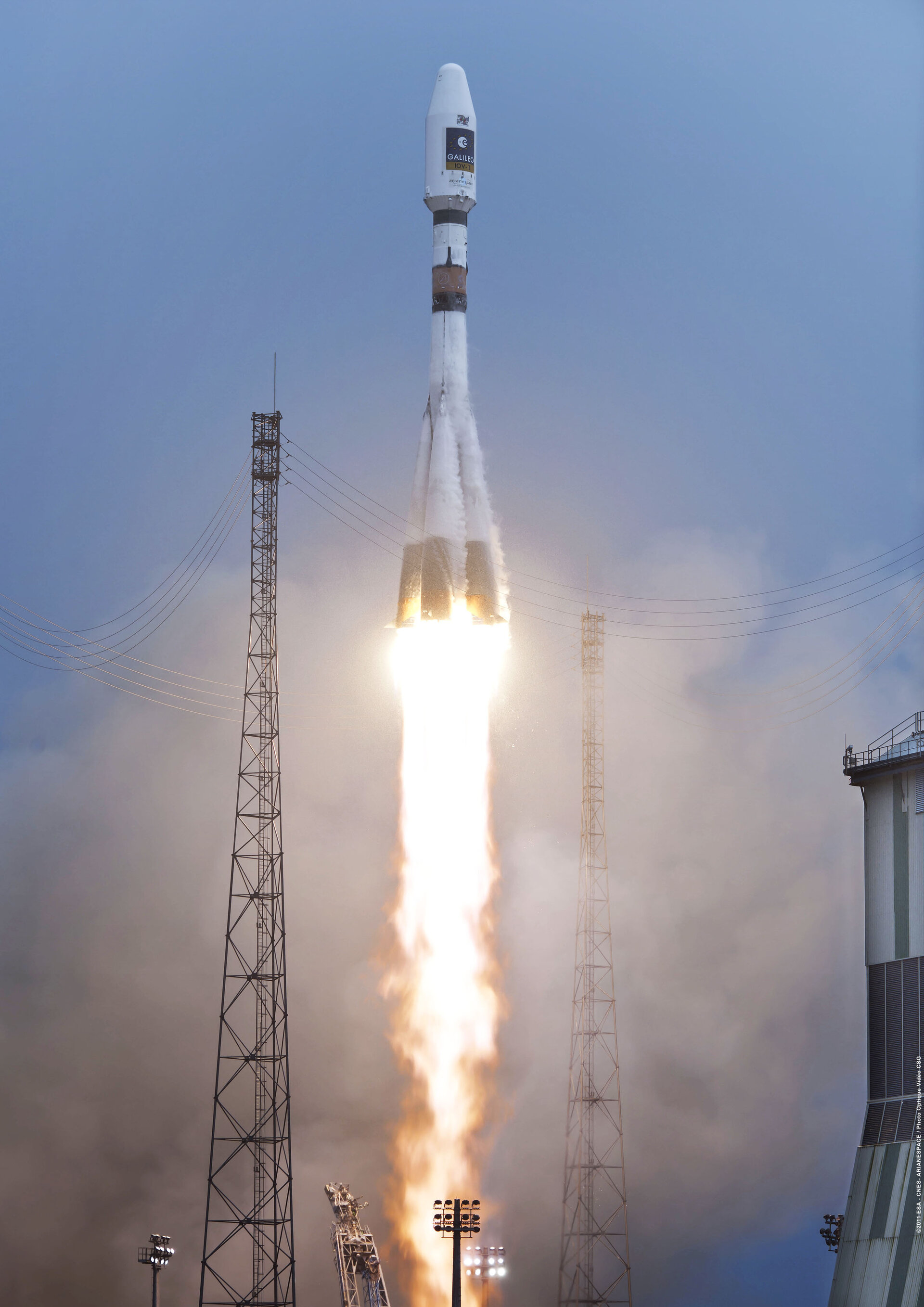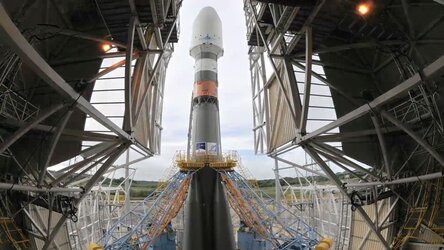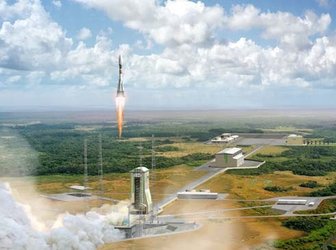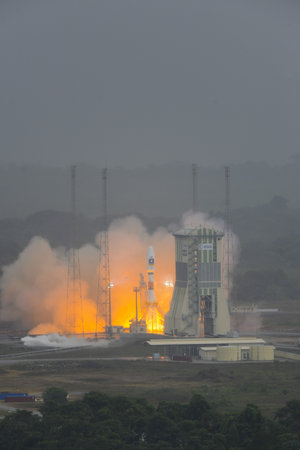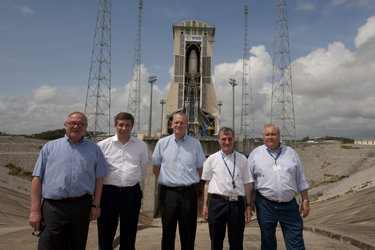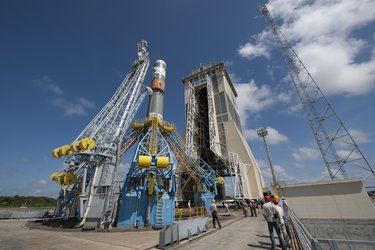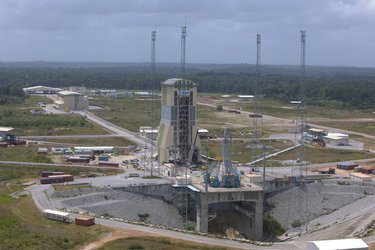Soyuz
A Soyuz launcher took off from Europe’s Spaceport in French Guiana on 21 October 2011. This was a historic event because it was the first time that a Soyuz was launched from a spaceport other than Baikonur or Plesetsk. It also marked a milestone in the strategic cooperation between Europe and Russia on launchers.
The decision to develop the launch infrastructure to enable Soyuz to be launched from French Guiana was of mutual interest to both Europe and Russia, and benefited from funding from the European Community.
Soyuz is a medium-class launcher. Its performance perfectly complemented that of the ESA launchers Ariane and Vega, and increased the competitiveness and flexibility of the exploitation of Ariane launchers in the commercial market.
The Soyuz launch vehicle that was used at Europe’s Spaceport is the
Soyuz launch site
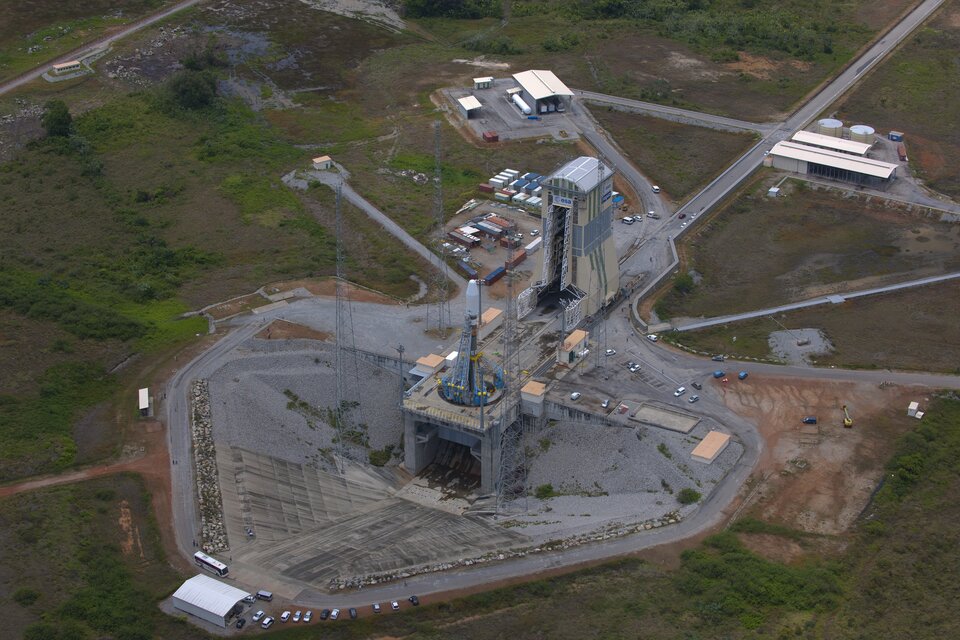
Geological and topographic surveys began at the site selected for Soyuz in 2003. The site, called ELS, is 13 km northwest of the Ariane launch site and consists of three main zones: the launch platform, the preparation area (MIK), where the three stages are assembled horizontally and checked, and the launch control centre.
Construction of the flame trench, the launch platform, the MIK and the control centre was completed at the end of 2008. The MIK connected to the launch platform by a
Human spaceflight
The Soyuz rocket is the workhorse for Russian human space missions and has been used for that purpose longer than any other vehicle. In the 1960s it began carrying cosmonauts into space and then to the Soviet Salyut and Mir stations. Together with the US Space Shuttle, it ensured the transport of crews to and from the International Space Station.
To ensure that Soyuz was able to carry out missions of this type from Europe’s Spaceport, the launch infrastructure was designed so that it could be smoothly adapted for human spaceflight, should this have been decided.















 Germany
Germany
 Austria
Austria
 Belgium
Belgium
 Denmark
Denmark
 Spain
Spain
 Estonia
Estonia
 Finland
Finland
 France
France
 Greece
Greece
 Hungary
Hungary
 Ireland
Ireland
 Italy
Italy
 Luxembourg
Luxembourg
 Norway
Norway
 The Netherlands
The Netherlands
 Poland
Poland
 Portugal
Portugal
 Czechia
Czechia
 Romania
Romania
 United Kingdom
United Kingdom
 Slovenia
Slovenia
 Sweden
Sweden
 Switzerland
Switzerland


























